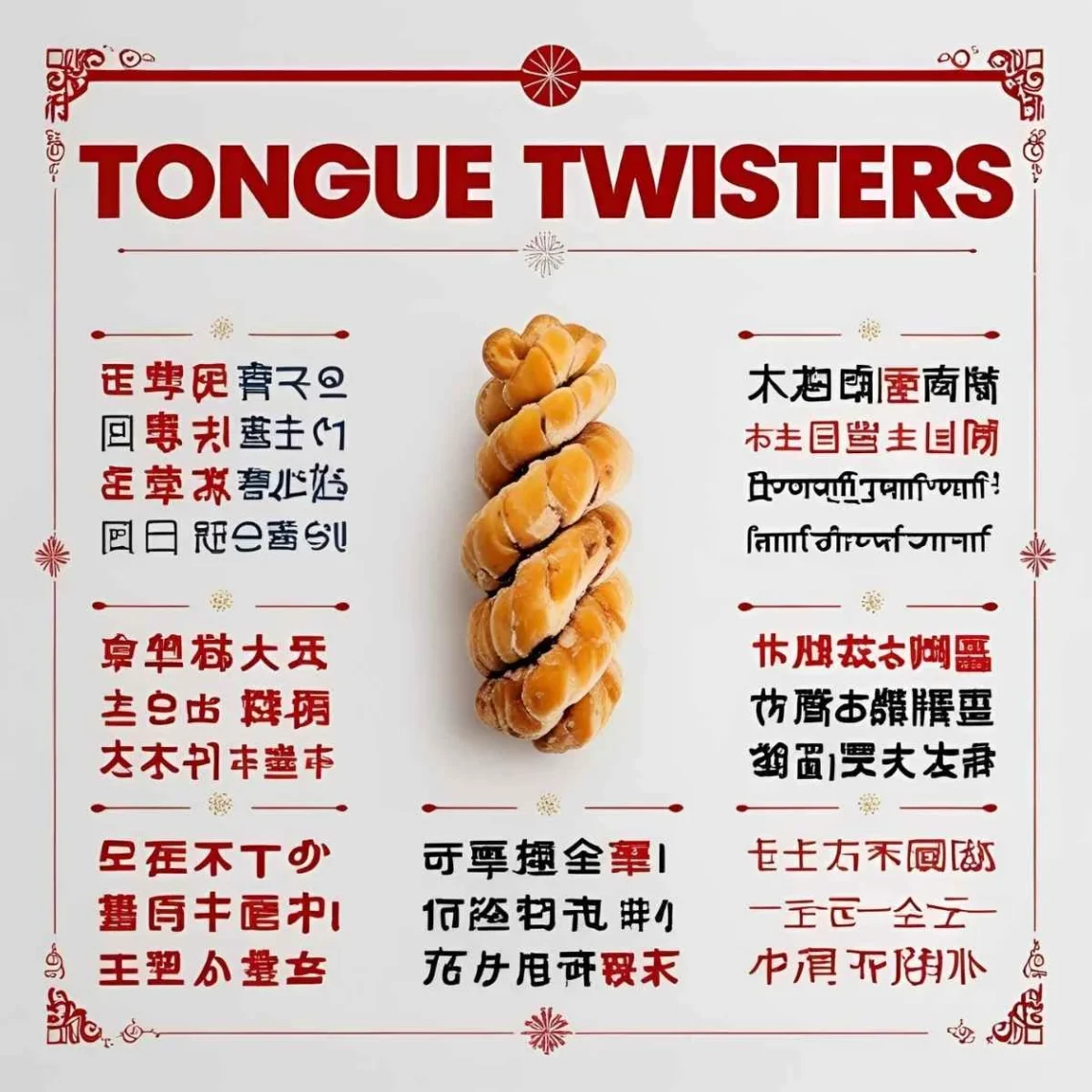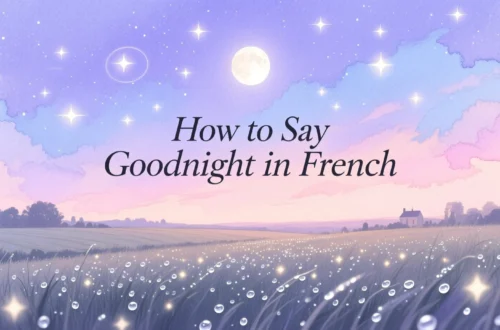As a child, I stumbled over “she sells seashells by the seashore,” giggling with friends as our tongues tripped over the words. That playful struggle is universal, uniting people across cultures in the joy of linguistic acrobatics.
Whether it’s a rapid-fire phrase in a Paris café or a rhythmic challenge in a Nairobi market, tongue twisters spark laughter and connection. Moreover, they reveal the unique sounds and rhythms of each language.
Let’s embark on a global adventure to explore tongue twisters in different languages and discover what they reveal about cultural and linguistic diversity.
Reference Table: Tongue Twisters in Different Languages
| Language | Tongue Twister | Cultural/Linguistic Insight |
|---|---|---|
| French | Les chaussettes de l’archiduchesse sont-elles sèches ou archi-sèches? | Emphasizes “s” sounds, testing French pronunciation precision. |
| Spanish | Tres tristes tigres comen trigo en un trigal. | Focuses on rolling “r” sounds, common in Spanish-speaking regions. |
| Italian | Trentatré trentini entrarono a Trento, tutti trentatré trotterellando. | Plays with “tr” sounds, reflecting Italian’s melodic rhythm. |
| German | Fischers Fritz frisst frische Fische. | Uses alliteration with “f” sounds, showcasing German’s crisp consonants. |
| Mandarin | Sì shì sì, shí shì shí, shísì shì shísì. (四是四,十是十,十四是十四) | Tests tone accuracy, critical in Mandarin’s tonal system. |
| Hindi | Kachcha papad, pakka papad. | Repeats “p” sounds, highlighting Hindi’s plosive consonants. |
| Japanese | Nama mugi, nama gome, nama tamago. (生麦、生米、生卵) | Plays with “nama” repetition, testing Japanese syllable clarity. |
| Korean | Ganada-ra-ma-ba-sa-a-ja-cha-ka-ta-pa-ha. (가나다라마바사아자차카타파하) | Uses the Korean alphabet rhythmically, emphasizing flow. |
| Arabic | Qad qadaqa qadmun qawiyun qadiman. (قد قدق قدم قوي قديما) | Focuses on guttural “q” sounds, common in Arabic’s phonetic range. |
| Swahili | Kipepeo kipepeo, kipepeo kipepeo kiko wapi? | Repeats “ki” sounds, reflecting Swahili’s rhythmic flow. |
| Zulu | Ubaba ubhebha ubhebhana. | Emphasizes “b” sounds, showcasing Zulu’s click-like consonants. |
| Yoruba | Ìrókò tí ó kọ́ ni kò kọ́. | Plays with tonal repetition, testing Yoruba’s pitch variations. |
| Maori | Whakarongo ki te tangi o te manu. | Focuses on “ng” and vowel sounds, reflecting Maori’s lyrical quality. |
| Hawaiian | Kākaʻā ka ʻākā i ka laʻakā. | Repeats “k” sounds, evoking Hawaii’s poetic cadence. |
| Cherokee | Gvdi gvdodi, gvdodi gvdodisdi. | Uses repetitive syllables, testing Cherokee’s polysynthetic structure. |
European Languages: Playful Precision in Sound
European tongue twisters highlight phonetic precision and cultural flair. For instance, in French, “Les chaussettes de l’archiduchesse sont-elles sèches ou archi-sèches?” challenges speakers with “s” sounds, often recited with playful exaggeration in French schools. Meanwhile, Spanish’s “Tres tristes tigres comen trigo en un trigal” tests the rolling “r,” a hallmark of Spanish pronunciation, heard in lively gatherings across Spain and Latin America. Additionally, Italian’s “Trentatré trentini entrarono a Trento, tutti trentatré trotterellando” plays with “tr” sounds, reflecting Italy’s melodic speech. In German, “Fischers Fritz frisst frische Fische” uses sharp “f” alliteration, aligning with Germany’s crisp, structured language. Thus, these tongue twisters blend fun with linguistic skill, showcasing Europe’s diverse phonetic landscapes.
Asian Languages: Rhythmic and Tonal Challenges
Asia’s tongue twisters reflect its linguistic diversity, often focusing on rhythm and tone. For example, in Mandarin, “Sì shì sì, shí shì shí, shísì shì shísì” tests tone accuracy, as slight pitch changes alter meanings, a challenge for learners in China. In Hindi, “Kachcha papad, pakka papad” repeats “p” sounds, popular in India’s playful word games. Similarly, Japanese’s “Nama mugi, nama gome, nama tamago” emphasizes syllable clarity, often recited in Tokyo’s language classes. In Korean, “Ganada-ra-ma-ba-sa-a-ja-cha-ka-ta-pa-ha” uses the alphabet rhythmically, a fun exercise for Korean speakers. Finally, Arabic’s “Qad qadaqa qadmun qawiyun qadiman,” used across over 20 countries like Egypt and Iraq, focuses on guttural “q” sounds, reflecting Arabic’s rich phonetic range. These tongue twisters highlight Asia’s blend of tonal, rhythmic, and consonantal challenges.
African Languages: Rhythm and Community in Wordplay
African tongue twisters often emphasize rhythm and communal fun. For instance, Swahili, spoken in over 20 countries like Kenya and Tanzania, uses “Kipepeo kipepeo, kipepeo kipepeo kiko wapi?” to repeat “ki” sounds, often chanted in East African schoolyards. In Zulu, “Ubaba ubhebha ubhebhana” focuses on “b” sounds, reflecting South Africa’s vibrant oral traditions. Similarly, Yoruba’s “Ìrókò tí ó kọ́ ni kò kọ́” tests tonal shifts, a playful challenge in Nigerian gatherings. These tongue twisters, shared in social settings, foster laughter and connection, showcasing Africa’s rhythmic and communal linguistic heritage.
Indigenous & Island Languages: Lyrical and Cultural Wordplay
Indigenous and island languages use tongue twisters to celebrate lyrical sounds and cultural identity. For example, Maori in New Zealand uses “Whakarongo ki te tangi o te manu,” emphasizing “ng” and vowel sounds, often recited in communal hui (gatherings). In Hawaiian, “Kākaʻā ka ʻākā i ka laʻakā” repeats “k” sounds, evoking the islands’ poetic cadence. Similarly, Cherokee’s “Gvdi gvdodi, gvdodi gvdodisdi” tests syllable repetition, used in Native American storytelling. In Samoan, “Lelei le lolo i le lalolagi” emphasizes “l” sounds, reflecting Pacific communal traditions. Across these cultures, from New Zealand to the Cherokee Nation, tongue twisters strengthen linguistic and cultural bonds through playful repetition.
Cultural Insights: The Evolution of Tongue Twisters
Tongue twisters have deep cultural roots, often tied to oral traditions and education. For instance, English tongue twisters like “Peter Piper” trace back to 19th-century school exercises, sharpening pronunciation. In Arabic, tongue twisters with “q” sounds date to medieval poetry, testing linguistic skill. Moreover, in African languages like Swahili, tongue twisters like “sawa” evolved from trade-era riddles, fostering quick thinking. In Asia, Mandarin’s tonal twisters reflect ancient linguistic systems, while Japanese versions emphasize syllable clarity for haiku-like precision. These playful phrases are more than games—they preserve linguistic heritage, from European classrooms to Pacific storytelling circles.
Proverbs and Sayings: Wisdom of Wordplay
- French: “Les mots dansent, le cœur rit.” (Words dance, the heart laughs.) – Ties wordplay to joy.
- Hindi: “Zubaan ka khel dil ko chhoo jata hai.” (The game of words touches the heart.) – Highlights emotional connection.
- Swahili: “Maneno yanapocheza, furaha huja.” (When words play, joy follows.) – Links wordplay to happiness.
- Japanese: “Kotoba wa odoru, kokoro wa musubu.” (Words dance, hearts connect.) – Emphasizes bonding through language.
- Yoruba: “Ọrọ ti o yọ, ẹnu ni o jẹ.” (Words that twist, the mouth enjoys.) – Celebrates playful speech.
FAQs
Why do tongue twisters sound similar across languages?
Some share phonetic patterns due to linguistic roots (e.g., Indo-European languages) or cultural exchange, like Arabic’s influence on Swahili.
What’s the oldest known tongue twister?
English’s “Peter Piper” (1813) is among the earliest recorded, though oral traditions in languages like Arabic predate written records.
How do cultures use tongue twisters?
Collectivist cultures (e.g., African, Indigenous) use them for communal fun, while individualistic cultures (e.g., European) focus on personal skill-building.
Conclusion
From “va bene” in Italy to “sawa” in Tanzania, tongue twisters weave a global thread of playful challenge and connection. Each phrase, whether the rhythmic “daijōbu” in Japanese or the lyrical “pai” in Maori, reflects cultural sounds while celebrating our shared love for wordplay. Consequently, these linguistic games remind us that a tricky phrase can spark laughter and unity across all people. How do you twist your tongue in your language? Share your favorite tongue twisters below—we’d love to try them out!





